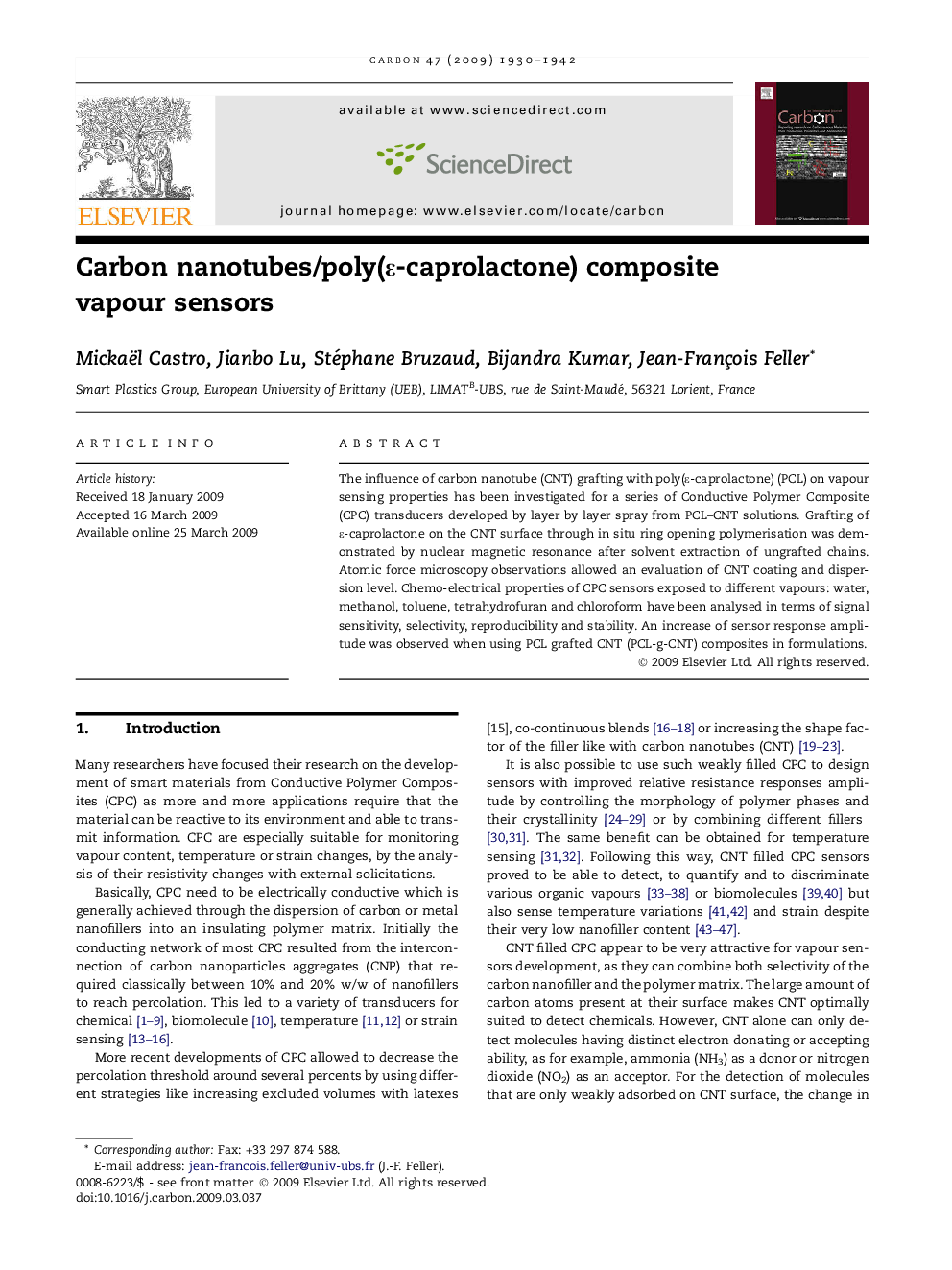| Article ID | Journal | Published Year | Pages | File Type |
|---|---|---|---|---|
| 1417675 | Carbon | 2009 | 13 Pages |
The influence of carbon nanotube (CNT) grafting with poly(ε-caprolactone) (PCL) on vapour sensing properties has been investigated for a series of Conductive Polymer Composite (CPC) transducers developed by layer by layer spray from PCL–CNT solutions. Grafting of ε-caprolactone on the CNT surface through in situ ring opening polymerisation was demonstrated by nuclear magnetic resonance after solvent extraction of ungrafted chains. Atomic force microscopy observations allowed an evaluation of CNT coating and dispersion level. Chemo-electrical properties of CPC sensors exposed to different vapours: water, methanol, toluene, tetrahydrofuran and chloroform have been analysed in terms of signal sensitivity, selectivity, reproducibility and stability. An increase of sensor response amplitude was observed when using PCL grafted CNT (PCL-g-CNT) composites in formulations.
